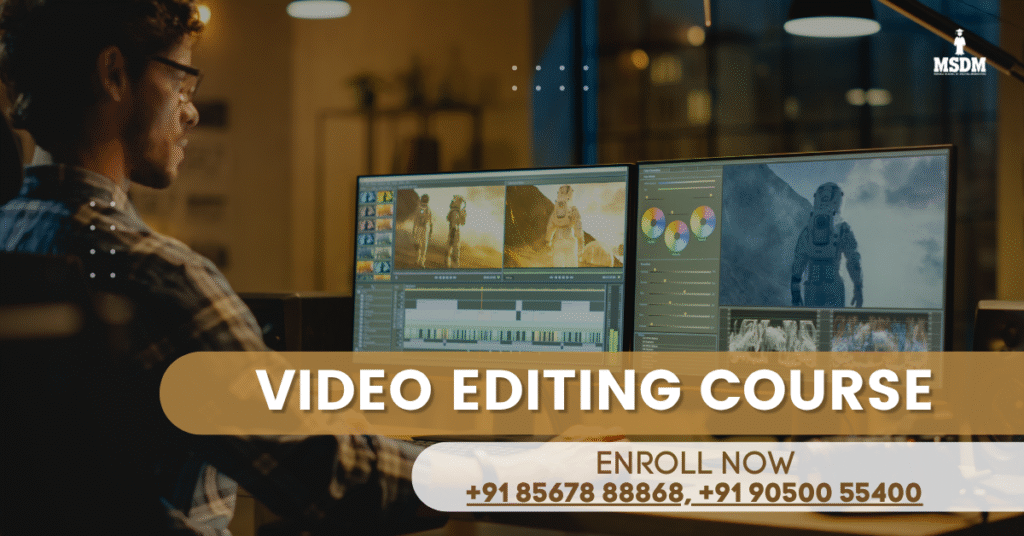Introduction
In today’s digital-first world, video content is king. Whether it’s a compelling YouTube vlog, a cinematic wedding film, or a brand’s Instagram reel, well-edited videos are what captivate audiences and tell powerful stories. If you’ve ever watched a great video and thought, “I wish I could do that,” then it’s time to turn that curiosity into a creative skill by joining a video editing course.
Why Learn Video Editing?
Video editing is more than just cutting clips and adding transitions. It’s a form of storytelling that combines visuals, sound, and rhythm to evoke emotion and deliver a message. Here are a few compelling reasons to learn video editing:
- Career Opportunities: From media production and marketing to freelance content creation, video editors are in high demand.
- Creative Expression: Editing gives you the power to shape how a story is told. Every cut, transition, and effect reflects your artistic voice.
- Content Creation: Whether you’re a YouTuber, influencer, or small business owner, learning to edit your own videos can save time and elevate your brand.
- Lucrative Freelance Potential: Skilled editors can work with clients worldwide and set their own rates.
What to Expect in a Video Editing Course
A well-structured video editing course typically covers both technical and creative aspects of the craft. Here’s a breakdown of what you’ll learn:
> Technical Skills:
- Editing Software Mastery: Learn tools like Adobe Premiere Pro, Final Cut Pro, DaVinci Resolve, or CapCut.
- Timeline Editing: Understand cutting, trimming, and sequencing clips efficiently.
- Audio Editing: Clean up audio, sync sound, and add music and effects.
- Color Grading: Adjust lighting and color tones to create mood and continuity.
- Motion Graphics & Effects: Use transitions, titles, and visual effects to enhance storytelling.
> Creative Concepts:
- Storyboarding: Plan the structure and pacing of your video.
- Visual Storytelling: Learn how to evoke emotion and guide the viewer’s eye.
- Pacing & Rhythm: Create smooth, compelling edits that keep your audience engaged.
Who Should Take This Course?
- Aspiring Filmmakers & YouTubers
- Marketing Professionals
- Photographers Expanding into Video
- Students & Hobbyists
- Anyone who wants to create content that stands out
Online vs. In-Person Courses
Both formats have their perks:
- Online Courses: Flexible, affordable, and self-paced. Great for working professionals or remote learners.
- In-Person Classes: More hands-on experience, direct mentorship, and collaborative learning environments.
Tips for Choosing the Right Course
- Check the Curriculum: Ensure it aligns with your goals—whether it’s professional work, social media content, or filmmaking.
- Look at Reviews: Student testimonials and course ratings can reveal the instructor’s teaching style and course value.
- Software Focus: Make sure the course teaches industry-standard tools you’re likely to use.
- Portfolio Building: A good course should help you build a strong portfolio of edited projects.
Final Thoughts
Video editing is one of the most empowering digital skills you can learn today. Whether you’re aiming for a new career, launching a YouTube channel, or just looking for a creative outlet, a video editing course can be the perfect first step.
So grab your footage, fire up your editing software, and start cutting your way into the world of video storytelling. The future of content is visual—and now, it’s yours to shape.

